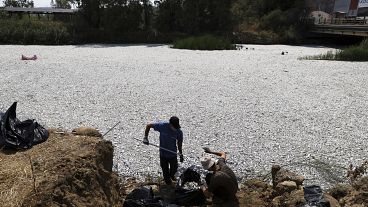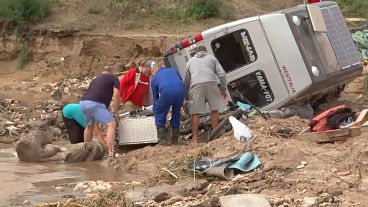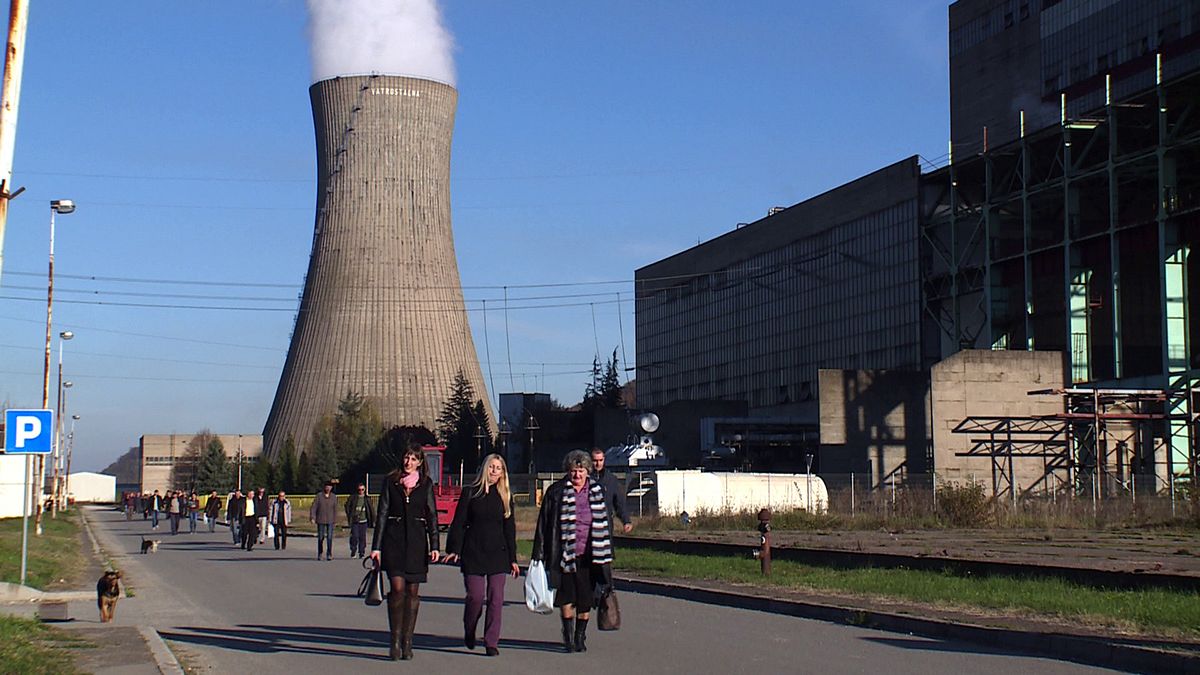On all Saints day, people had come from all parts of Bosnia and Herzegovina, and even from abroad, to honour their loved ones at the cemetary of the Divkovici village, in Bosian and…
On all Saints day, people had come from all parts of Bosnia and Herzegovina, and even from abroad, to honour their loved ones at the cemetary of the Divkovici village, in Bosian and Herzegovina.
That’s where our reporter Valérie Gauriat met Goran Stojak, who recently lost his father to lung cancer.
In the last four months, six people from Divkovici have died of the same condition.
They are the latest on a long list of deaths from lung cancer in the area.
The finger of suspicion points towards the Tuzla power plant. Waste from its coal combustion is discharged just outside the village.
Bosnia faces legal action over Chinese-backed coal dash: https://t.co/1VNw1dXjG7pic.twitter.com/nwtX90KiTH
— Climate Home (@ClimateHome) October 31, 2016
Goran Stojak has been fighting to save locals from the plant’s pollution for years.
“The power plant is there, and the waste comes through the pipeline,” Stojak explained to Euronews.
“And this water gradually seeps into the ground, it spreads on the banks, on both sides of the lake. And it gets into the wells from where people get their drinking water.”
Once filtered and mixed with water, the waste is piped to large landfills on the village outskirts.
Tests carried out by an independent laboratory have shown high concentrations of heavy metal residues lying deep underground.
“It looks like fairly rich, fertile soil. But it’s actually waste residues from the coal plant.” commented Valerie Gauriat, taking some of the brown ashes Goran had scraped from the surface in her hand. “And in there, you can find things such as cadmium, mercury, arsenic , chromium. All this has contaminated the land around the village, as well as the water.”
In dry weather, the wind blows particles of toxic soot to peoples’ homes.
Bosnia and Herzegovina #coal power plants face wave of lawsuits and complaints https://t.co/QFwevkMZRk#BiH#Balkans#environmentpic.twitter.com/JIoHwgNY42
— Bankwatch (@ceebankwatch) October 17, 2016
Most villagers are affected by asthma, bronchitis and even more serious lung diseases.
“Last night, I had to take my wife and our seven-month-old baby to hospital for lung obstruction problems,” Stojak said.
“Lying in bed at night I often hear my neighbour crying out from the pain of lung cancer, he continued. “People living here are doomed. This village will be a ghost town in a few years. There’ll be nobody left.”
Goran heads up a neighbourhood community and constantly tries to get local authorities to do something about the plant’s pollution.
He says nothing has been done for the 70 people who still live in the village, such as Mila, who lives off a meager pension, and until recently, from food grown in her garden.
“They used to weigh up to three kilos,” she told Euronews,, showing a finger-size beet grown in her garden for the cows.
Laboratory test results scare Mila, but she says it is not easy to give up on her home-grown produce.
“We have no choice,” she said. “We have small pensions, we have to live off something.. We have no money to buy things outside. My son is unemployed. I have to grow what we eat. “
Euronews reporter Valerie Gauriat said It was impossible to get into the Tuzla power plant. Repeated requests to the electricity company managing the plant “got lost in the chimney fumes,” she said.
Coal – the most harmful fossil fuel
Heavy metals, carbon dioxide, nitrogen oxide, sulfur dioxide and fine particles, make coal the most harmful of fossil fuels.
Along with air pollution from cars and domestic coal burning, the plant puts Tuzla high on the list of Europe’s most polluted cities.
The Centre for Ecology and Energy has complained about the Tuzla power plant’s expansion projects. Its director Dzemila Agic says it’s better to invest in energy efficiency.
“We found out that by implementing simple measures, we can reduce the consumption of thermal energy by 42 percent and carbon dioxide emissions by 40 percent. Things like thermally insulating buildings,” Agic told Euronews.
Plans for more coal sites
There are four coal plants in Bosnia and Herzegovina and plans to build a further seven coal sites.
NGOs say that could generate an 18 percent increase in greenhouse gas emissions – from the level seen in 1990 – by 2030.
In the absence of a national energy programme, building new coal facilities at the moment doesn’t depend on the State’s decision, but on the country’s entities own individual plans: The Federation of Bosnia and Herzegovina and the Republika Srpska.
Valérie Gauriat spoke with Admir Softic, vice-minister for energy at the foreign trade ministry in Sarajevo.
“Would you agree that in order to comply with reduction of emissions commitments, all these plans would have to be cancelled?” she asks.
“This is a political issue that the governments of both entities which make up Bosnia and Herzegovina will handle,” says Softic
“On the other hand, the state is determined to meet its commitments towards the Energy Community and the European Union. We are determined to achieve the target of 40 percent for renewable energy by 2020,” he added.
In Republika Srpska, the Ugljevik coal power plant also plans a new unit.
Management opened the plant’s door to Euronews; but did not comment on the expansion project, which has also attracted complaints from environmental organisations.
What they did want to speak about, was its plans to modernise the existing plant over the next three years.
“Once we have completed the construction of a desulfurization unit, we will reduce sulfur dioxide emissions by more than 80 times, at 200 mg per cubic meter, which represents the most rigorous European standards,” the plant’s project manager Zlatko Malovic told Euronews. “On the other hand, we will also reduce by 8 times the emissions of particulate matter from the chimney by installing new electro filters.”
Nobody here disputed the health and environmental impact of the plant; but workers insist it’s a crucial source of employment for the whole region.
Radivoje Radic has worked at the Ugljevik power plant for 20 years. He told Euronews that until clean energy is developed, locals can not do without the coal industry to find jobs.
“Despite the health risks, we are forced to produce electricity in this way,” Radic said. “Otherwise our youth would leave for other cities, other states, other continents in order to find jobs.
“And if there were no more young people living here, then what would be the point in keeping this plant open?”












